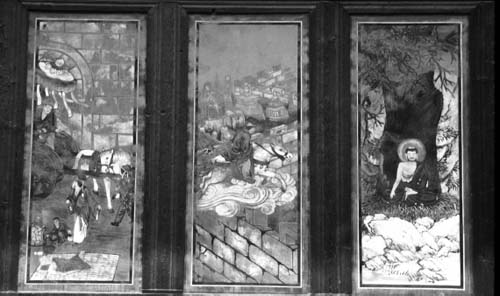BuddhismHistory and Sources |
What were the four passing sights? |
On several occasions the young Gautama had to leave the confines of the palace. Although his father instructed his servants to clear the road of any unsightly reminders of human frailty, Gautama would nevertheless find himself asking the hardest questions of all. On one excursion, he saw someone bent and struggling to walk. Old age, his servants explained, a hardship many people must eventually face. Another time, Gautama spotted a leper lying by the way in pain. That was illness, his servants explained; it happened to many people. Then one day Gautama’s entourage came across a funeral procession. Death, said his servants, and no one escapes that. Finally, according to the traditional account, Gautama saw by the road a young man who obviously possessed nothing and yet seemed content. That was the world-renouncer Shuddhodana so badly wanted his son not to become. The traditional account holds that all of the four experiences resulted from divine intervention, the gods assuming the roles of suffering human beings so that Gautama would be moved to take the next critical steps in ensuring the possibility of enlightenment for humankind. The clearly formulaic account admirably sums up the key issues that would eventually provide the foundations of Gautama’s enlightenment and Buddhahood.

Three scenes from the life of the Buddha on wooden wall paintings, Jogye-sa Zen temple, Seoul, South Korea. They depict, from left to right, one of the “Four Passing Sights,’ Siddhartha Gautama’s departure over the palace walls, and his quest for Enlightenment in meditation beneath the Bodhi tree.
